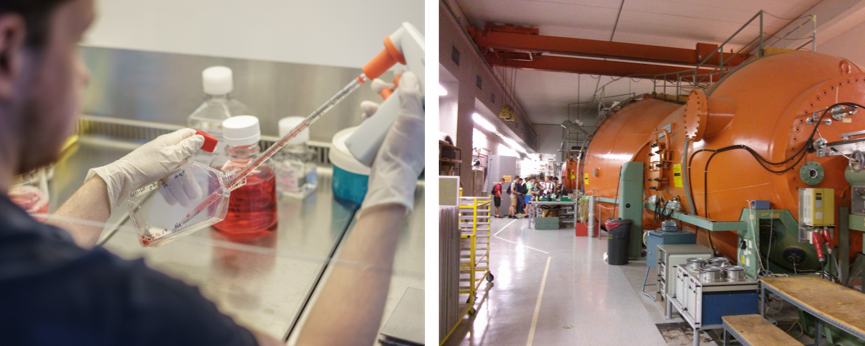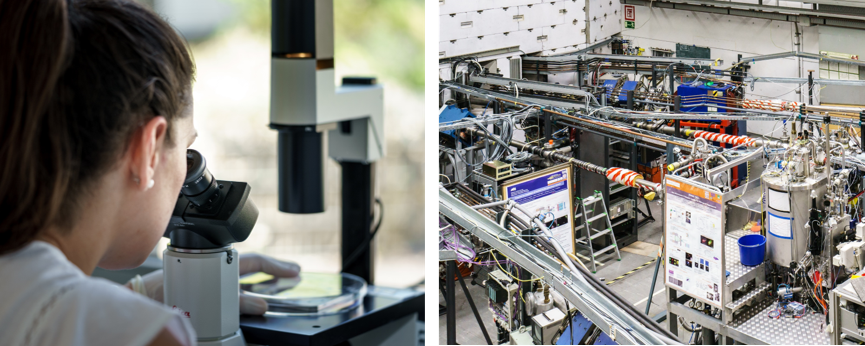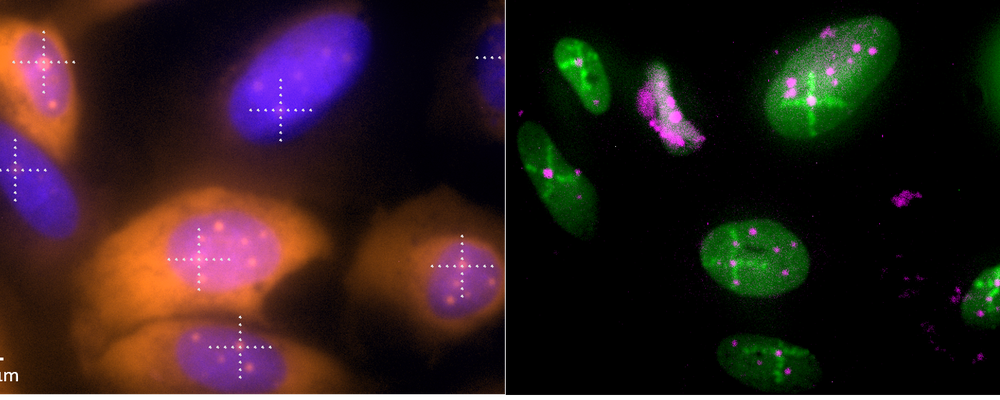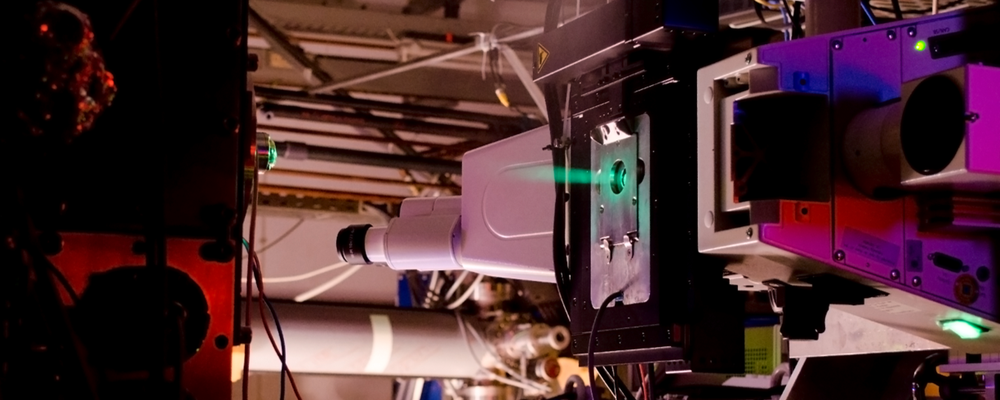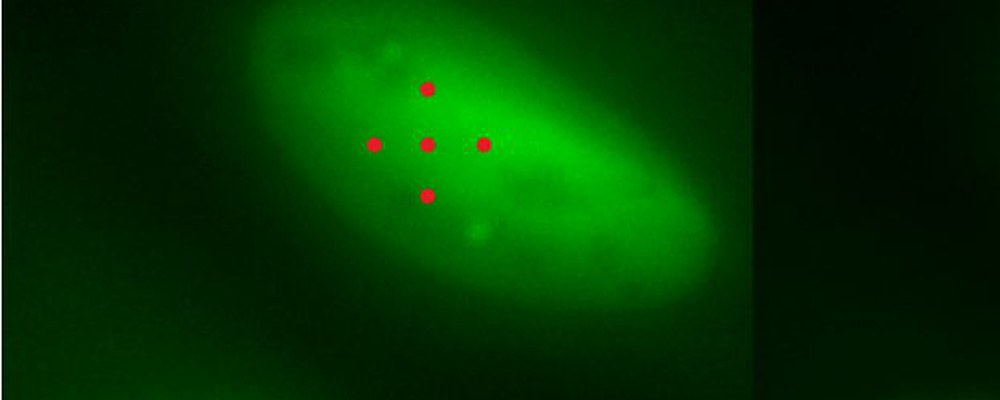The influence of ionizing radiation on living organism is subject of ongoing research. In particular, the effect of low doses of radiation is widely unknown. One approach to understand the biological radiation effects is to irradiate and analyze living cells in culture. Using modern techniques from molecular biology, it is possible to study the radiation-induced damages in the cell (above all the severe DNA double-strand breaks) as well as the involved repair proteins on a microscopic scale. Among all ionizing radiations, highly energetic ions are particularly suitable for the irradiation of living cells.
The ion microprobe SNAKE (Superconducting nanoprobe for applied nuclear physics experiments) is installed at the 14 MV Tandem Accelerator in Garching near Munich and can be used for material analysis as well as for radiation biology research. The sub-micrometer beam size allows the targeted irradiation of single defined cells but also of more complex samples with single or counted ions, making it a suitable tool for low and high dose research. SNAKE provides protons and heavier ions with a (2-2000 keV/µm), as follows:
- protons: 4 – 28 MeV
- d, He, B, C, O: 2 – 10 MeV/nucl
- heavier ions: 0.2 – 4 MeV/nucl
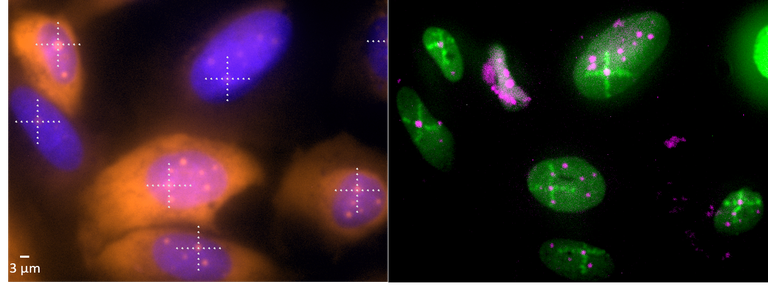
By scanning the ion microbeam to irradiate one spot after another with a predefined pattern without targeting, it is possible to irradiate several cm² of cell cultures, tissues and small animals. The maximum ion range is obtained with protons, allowing irradiation of samples of up to 5 mm thick, such as 3D tissues, mouse ears or tumours. The heavier ions are more suitable for the exposure of single cell layers due to their lower range.
The live cell imaging setup with temperature control was designed for the irradiation of living cells with online monitoring. It can be used for targeted irradiation of single cells or even cellular substructures like mitochondria or nucleoli with a targeting accuracy < 2 µm. Furthermore, it enables kinetic and dynamic studies of cell reactions, such as the (sequential) recruitment of several repair factors after DNA double-strand break induction.
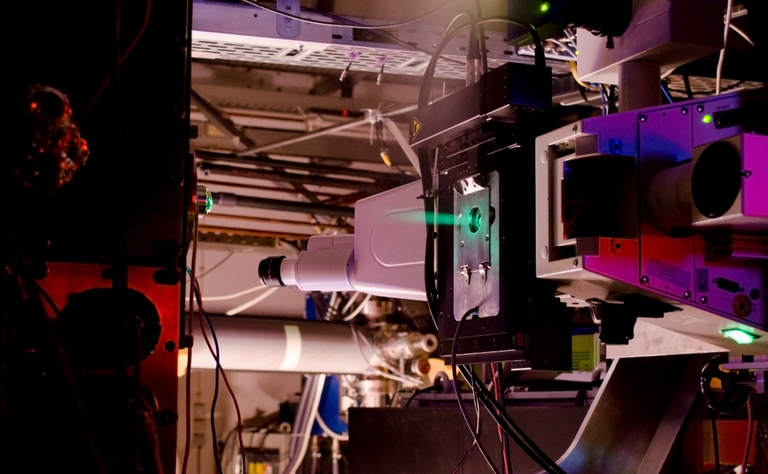
At SNAKE, LET dependent studies using low and high LET particles can be used for intercomparison studies, in particular to investigate various endpoints of cell reactions after irradiation, especially at low doses.
Using the chopper-buncher system installed at the tandem accelerator, it is possible to form a short pulsed proton beam of about 1 ns duration at the target station of SNAKE. Using the focusing system of SNAKE, up to 20 Gy can be delivered in a single proton pulse to a beam spot of about 100 µm. This can be used to investigate ultra-high dose rate effects when irradiating from low to high doses.
The Facility offers access to the SNAKE microbeam, including all possible irradiation modes as described above, to potential users in the field of radiobiology. Especially low-dose effects, also in the framework of bystander research, can be studied. In addition, for radiobiological experiments at SNAKE, access is provided to the biolab, including the cell cultures that have been developed, cell containers and irradiation and/or biological protocols. The user support staff are experienced in developing new irradiation as well as biological protocols as required, and in implementing and performing these protocols in collaboration with the external users.
